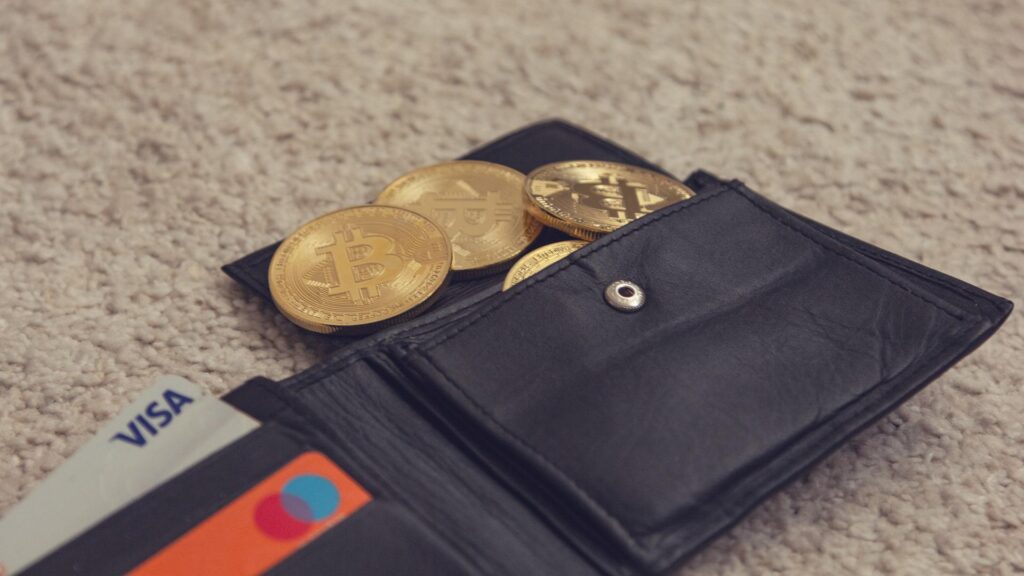When you think of a regular wallet or purse, you probably think of a place you store your cash, maybe some debit or credit cards, perhaps some form of I.D like a license. Whilst there are similarities between a regular wallet and a crypto wallet, as much of the internet suggests, wallet perhaps isn’t exactly quite the right term for it. Let us explain further.
Your cryptocurrency, or in our case NFTs, are not stored in a central location, such as we would do with a wallet, instead, they are stored on the blockchain. Remember this is one of the benefits of the blockchain, added security as such, making it harder for example to steal your ‘wallet’. Your ‘crypto wallet’ is actually more like a ‘key’ that gives you access to your crypto and NFTS, where they are stored on the blockchain. Once you have accessed them then you can buy, sell, transfer, trade etc.
Why do you need a crypto wallet?
If you would like to purchase one of our NFTs, and we really hope you do, then you will need a wallet. Most people with cryptocurrency, or digital assets, will have one. Consider it a safe way to access your valuable items.
Different types of wallets
This is where things can start to get a little confusing as there are several different types of wallets, and it seems they have several names each; hot, cold, hardware, software, custodial, non-custodial, it can be a bit overwhelming but stick with us. There are three main types of crypto wallets;
- Paper
Largely considered a wallet of the past, for this version pieces of paper are printed which contain your keys or a QR code to access your crypto/NFTs. This option is not used as much anymore, for many reasons, however, as the information is stored offline is considered to be one of the safer methods.
- Software
These are probably the most common wallet currently and there are two options, both online. These involve the use of an app or a website. Custodial wallets are wallets in which a 3rd party (the website or app organization) holds your wallet. This 3rd party holds control of your private keys, which offers you somewhat of a safety buffer if you ever were to lose or forget these (examples: Binance, Free Wallet). This is very similar to how a bank would hold your savings account for example. Non-custodial wallets mean you are solely in charge of your wallet (examples: Coinbase, MetaMask), if you lose or forget your keys things are gone forever.
- Hardware
This involves purchasing a physical device to store your cryptocurrency, and NFTs, offline, separate from your computer. These are generally considered the safest option and recommended for anyone who is dealing with high wealth, for example,>$1000 worth of currency or assets, as the device will normally set you back around $100 (examples: Trezor, Ledger).

Safety
There are both similarities and differences between a regular wallet and a crypto wallet. As in real life having your wallet stolen is always a risk, and of course, the same applies to your crypto wallet, in the world of crypto we call these thieves hackers. Of course, there are additional safety measures you can take, as in life, which we will discuss further. Once your wallet is stolen, or even perhaps simply lost, you would no doubt be upset, but at least there are some steps you can take. You might contact the police, lodge a statement or report, and perhaps even be able to make a claim through insurance. None of these are possible with crypto wallets. Neither the police nor the organizations responsible for your wallet are required to help you. The plastic cards in your wallet are normally replaceable. You could contact your bank to get new debit or credit cards, and your local authority to issue you a new license. However again with your crypto wallet, none of this is possible. Think of it like any cash you may have had in your wallet when it was stolen or went missing, once your crypto wallet is gone, so are all of the cryptocurrency and NFTs with it.
How can you protect your crypto wallet, your currency, and your assets? The first step is research. Take a really good, long, hard look at the crypto wallet you are about to set up. There are literally hundreds if not thousands of articles, websites, and YouTube clips full of this information and reviews.
Always choose options that have multiple safety measures, at the bare minimum two-factor authentication = meaning at least 2 steps are required to access your wallet (like the password and code most apps require these days).
Keep your passwords, wallet ID, and seed phrase (recovery password) in a safe place. It might seem a bit strange like we’re going backward in time, but it is recommended you write them down on paper (read: offline and off your computer) and then keep them in a safe place. When you are thinking about this safe place don’t forget to consider all man-made and natural-made disasters that could possibly occur; such as fire, flood, and a dog eating your homework-type scenario.
Further down the track, we will walk you through the process to set up your own wallet – step by step, so stay tuned!
Helpful terms (perhaps include this in the FAQ section rather than the article)
Hot = connected to the internet (higher risk)
Cold = not connected to the internet (lower risk)
Hardware = a physical storage drive, similar to a USB (higher safety rating)
Software = an app or website program (lower safety rating)


